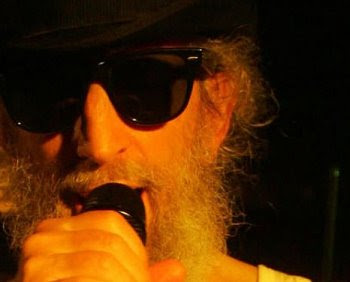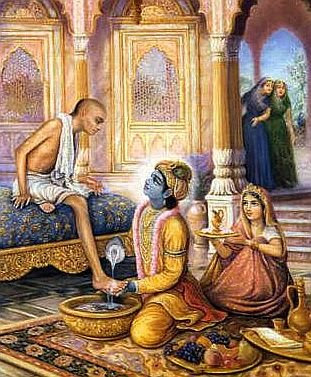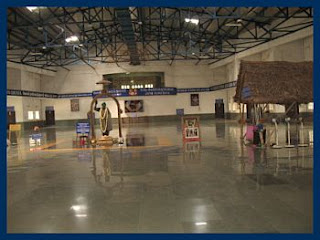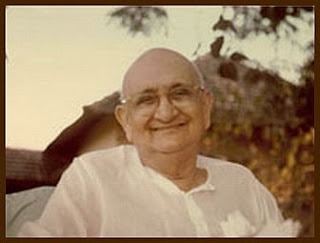 |
| Yogi Ramsuratkumar |
23 November 2016
Letter From India 1985
27 September 2014
2014 Navaratri Kolu Display at Yogi Ramsuratkumar Ashram
 |
| Amaranath Snow Lingam |
 |
| Mount Kailash and Dancing Shiva |
 |
| Section on the Ramayana |
 |
| Section shows some of the tales and stories of Rama and Sita |
 |
| Section dedicated to Lord Murugan |
 |
| Section full of Krishna leelas and legends |
 |
| With two nice butter BalaKrishnas |
 |
| Beautiful wooden model of the Ashram Hall |
 |
| Yogi Samisthan |
 | |
| Road back of Yogi Samisthan |
 |
| First night of Kolu Display |
4 July 2013
Devotion to the Guru
20 February 2013
27 March 2011
Lee Lozowick, A Tribute

Lee Lozowick, the spiritual son of Sri Yogi Ramsuratkumar of Tiruvannamalai, died November 16th, 2010 in his own bed in Prescott, Arizona, after a long battle with cancer. They say he died with a smile on his face.

Even though I have been fortunate over the years to meet many saints and holy people at Arunachala, there have only been two to whom I have felt a special connection. The first of these two is my own Guruji, Sri Nannagaru and the second is Lee Lozowick.
Many in Tiruvannamalai used to look forward to Lee’s regular annual visits to Arunachala, which in the last few years had to be curtailed due to Lee’s increasingly poor health. Whilst visiting Tiruvannamalai he would generally stay at his ashram ‘Triveni’ where he would make himself available at open meetings held at that facility. Lee was one of the most amusing and provocative gurus out of the many spiritual teachers visiting Arunachala.
In a famous book entitled 'Holy Madness', the writer Georg Feuerstein dedicates a chapter to Lee Lozowick, exploring his crazy wisdom guru tactics. My own experience was that whatever methods Lee Lozowick used, in personal interactions he was unfailingly kind and gentle. He has had a big impact on my life, and obviously his influence is still upon me, as I am now being inspired to write this tribute.
In 1975 Lee Lozowick was transformed by an 'event" that occurred upon waking up one morning from a night's sleep. Since then he has worked with hundreds of students and disciples in the U.S. and Europe.
He considered himself a "Western Baul," related to the itinerant tantric Baul musicians from Bengal, India. Additionally he was lead singer and lyricist for the rock band ‘Liars, Gods and Beggars’, the blues band ‘Shri ‘and the fused rock band the ‘Lee Lozowick Project’. Go to this link here:

To many an introduction to the teachings of Lee Lozowick is his book, “In the Fire”, which is a powerful look at enlightenment, ego transcendence, and the teacher-student relationship.
“The guru cuts a strange figure in the eyes of society. Indeed, the functional condition of the Divine contradicts all conventional standards. The cherished notions of the world are pointed out as delusions by the guru, and the movement towards union is declared invalid. The truth of existence is so potently simple that once you understand it, it seems totally unreasonable not to expect everyone to acknowledge your obvious grasp of the Divine process that is life. What does happen when you express this simple clarity? Not only are you not lauded, you are ostracized, vilified and attacked. The world does not take very kindly to the guru, because the awakened one is a living challenge to convention itself. The only challenge.”
[In the Fire by Lee Lozowick]
As an author he was very prolific and some of his most read books include; ‘The Only Grace is Loving God’, ‘The Alchemy of Love and Sex’, ‘Conscious Parenting’ and several volumes of poetry written to his Guru, Yogi Ramsuratkumar which communicate the essence of his teaching. His book website is at this link here and his own books are listed here:
Even though by nature he was approachable and easy going, with his devotees he demanded strong commitment and observance of structured sadhana.
In an interview with Andrew Cohen (video posted below), Lee Lozowick explains his attitude to sadhana and the results of skillful living thus::
“I am a firm believer in structure . . . I’m a firm believer in tradition, in the essence of tradition because I think that the laws of consciousness are the same now as they ever were but the world we live in is not the same as it ever was. So, I’m a firm believer in the need for a response to universal laws but not necessarily trying to recreate the old times and the old forms.
Every human being at the level of intrinsic dignity and intrinsic nobility, automatically knows how to live. If we are intelligent and educated, we know how to adjust to the circumstances that we find ourselves in. Obviously different than the circumstances fifty years ago.
So, my whole emphasis is on an instinctual search for that intrinsic dignity and that intrinsic nobility and from that, by definition, to be noble and to be dignified, is to have integrity, practice with impeccability, to live rightly and justly . . . I mean who knows how to? . . . If people don’t make an absolutely fundamental decision, an irrevocable radical decision . . . then they play around the edges . . .”
Or go direct to watch at:
http://www.youtube.com/watch?v=gJ6rG38eql8
And by way of inspiration to all of us in our sadhana and journey towards God, I complete this Tribute to Lee Lozowick, with his joyous, inspirational words:
"To ultimately "make it" in this Work of Awakening, of Transformation, you have to embrace the miraculous -- always. And that miracle is you being so much at peace with yourself that you can turn your energy towards welcoming and using the opportunities that are always falling into your lap. To embrace and devour these opportunities will make you free, happy, full of life, full of passion."
30 April 2009
Pearls of the Guru
"Everyone has his own path, his mission, and even if you take your Master as a model, you must always develop in a way that suits your own nature."
[Aïvanhov]
"My Guru became my all-in-all, my home, mother and father, everything. All my senses left their places, and concentrated themselves in my eyes, and my sight was centred on him. Thus my guru was the sole object of my meditation and I was conscious of none else. While meditating on him my mind and intellect were silent and I had thus, to keep quiet and bow to him in silence."
[Sri Sai Baba of Shirdi]

[Ramana Maharshi]
"This beggar prays to his Father to bless you all who have come here. My Lord Rama blesses you, My Father blesses you. Arunachaleswara blesses you. It doesn't matter to me what name it is. All the blessings of my Father for all of you! Well, that is the end. That is all."
[Yogi Ramsuratkumar]
31 March 2009
Sudama House
Today I visited Sudama, which is the house Yogi Ramsuratkumar lived in before his Ashram was built. And it was on February 20, 2001 at 3:19 a.m. in his Ashram at Tiruvannamalai, Bhagavan Sri Yogi Ramsuratkumar attained mukti.
His devotees have very nicely arranged this house displaying many of the items used during his life. I very much enjoyed visiting Sudama and recommend it to visitors and pilgrims. The house is located in Ramana Nagar at the back of the Post Office and across the road from the new Shiva Sannidhi facility.
"On December 1st, 1918, the child Ramsurat Kunwar was born into a righteous and devout religious family. His birthplace in Bihar was a village close to the sacred river Ganges, not far from Varanasi (Benares). From childhood, the child evinced an intense spiritual thirst and had extraordinary devotion towards the river Ganges. Playing along its shores brought him happiness and contentment and he would often fall into a deep, peaceful sleep by the banks of the sacred river." To continue reading the biography of Yogi Ramsuratkumar go to this link here.



Story of Sudama
The house is named “Sudama” after the famous story of Sudama and

After a long and tiresome journey on foot, Sudama arrived at the gates of
Krishna
Krishna

The spiritual significance of this event reveals that when charity is given from the heart without expectations of name, fame, appreciation or recognition, then the rewards multi-million fold. This is the characteristic of a karma yogi who performs actions relinquishing the fruits of the actions. The myth of Sudama is symbolic of God’s descent on earth to destroy evil, protect the virtuous and re-establish dharma in preparation for the birth of
18 December 2007
Lee Lozowick
A sample of some of his beliefs and teaching:
For rest of this article, go here
13 April 2007
HAPPY NEW YEAR
HAPPY TAMIL
NEW YEAR,
14TH APRIL, 2007.
"JUST AS LORD SHIVA TOOK 'ALAHALA' POISON AND CHANGED IT INTO 'AMBROSIA', THE LORD WILL CHANGE DIFFICULT SITUATIONS INTO GREAT BLESSINGS, FOR THOSE WHO WORK FOR HIM."
[Yogi Ramsuratkumar]
Yogi Ramsuratkumar Ashram
When he first moved to Tiruvannamalai, he lived at the Big Temple in town and later on at a house in the same area. But when Yogi's fame began to spread, large crowds started to gather at the house waiting for his darshan. The influx of devotees grew steadily in size eventually creating the need for an ashram. In 1993 Swamiji acceded to the acquisition of land, enabled by contributions, of a site of 3½ acres close to Sri Seshadri Swamigal and Ramana Ashrams.
In the below picture are some of the ashram cows just relaxing on a hot day under cooling trees.

Nearby the gardens and cows is the Veda Patsala, where young Brahmin boys are taught the correct chanting of vedas. Most of the boys will grow up to be priests performing pujas and functions either at Temples or at private functions. Near the Patsala, is a sign with the views of Yogi Ramsuratkumar on the inestimable value of chanting the Vedas.

Below is part of the Veda Patsala complex. Yogi Ramsuratkumar said that the Patsala would be the 'heart of the Ashram', and was intended to be a place where visiting pandits and scholars could stay and conduct Vedic research.

The ashram has created a 'mini' girivalam (giripradakshina) pathway around the Ashram, and by following the signs in blue you will be guided on your way. I also took this particular photograph because of the very cute 'animal' trashcans; just didn't expect to see them in an ashram! But they're great. Reminds me also of the big love Yogi always had for animals.

To the right is the mandiram of the Ashram, in which lies the samadhi of Yogi Ramsuratkumar and to the front a truly magnificent view of Arunachala. This almost direct southern aspect of the Hill is definitely one of the most memorable views of the Hill. If you want to find out more about the symbolism of different aspects of Arunachala, please check out this previous posting.

Below, nice, sunny faces of two of the ladies who work at the ashram. The atmosphere is very relaxed and pleasing and just about everybody seems to be happy and grateful to have been given the opportunity to work there. When Yogi Ramsuratkumar was alive he would always interact with ashram servants and be interested in their well being and keep up-to-date with family news.

Below is the inside of the Mandiram at the ashram. Yogi Ramsuratkumar was involved in every step of the large building programme which at one point involved the participation of up to 250-300 workers working long hours. The first Ashram structure to be completed was a small stone thatched-roof darshan mandir which could sit 200 people. It was located by the front gate of the developing Ashram and was the location of Yogi Ramsuratkumar’s regular darshans. But subsequently this huge Temple was built. The Temple 350 feet long and 150 wide was constructed to be big enough to accommodate 5,000 people. Due to photographic restricts I have only taken photographs of the northend of the hall.

Inside the huge mandiram at the southend is the temple and samadhi of Yogi Ramasuratkumar, (which you can't see). Whilst the mandiram was being built, Yogi spent much of his time in a bamboo hut supervising ongoing construction. For this reason he requested a representation of the hut remain inside the Mandiram.

Below is a statue representation of guruji, Yogi Ramsuratkumar. He always acknowledged with reverence his huge debt to sacred Arunachala and Arunachaleswarar Temple, saying:
'This hill and this temple, they have saved this beggar,' and with the utmost gratitude for the sanctity of Mount Arunachala, he would later say:

'This beggar wandering here and there, tired of wandering but having no home; Arunachalesvara, in the form of this hill, had mercy on this miserable sinner. So he gives thanks, a thousand thanks, to this holy hill, this holy temple. Oh, the magnanimity of the Lord! He has given me shelter for twenty long years. Whereas others who come are enabled to stay only days or weeks . . . For thousands of years the hill has given shelter to so many dirty sinners like me; and Arunachala will give us shelter for thousand of years to come.'

If you wish to read more about Yogi Ramsuratkumar Maharaj, please check out link for an excellent, short biography on the life of this saint.
19 March 2007
Swami Ramdas
"Saints are beacons. Saints show the path. They hearten you in your struggle. Their words should carry absolute weight with you. They can awaken and enthuse you. But you have to advance on the path by your own growing inner power and will. You should feel conscious that the divine within is your sole refuge." [Swami Ramdas]
Swami Ramdas is another prominent saint of the 20th Century who is connected with Arunachala and spent a short time on the Hill living in a cave and performing austerities.

He was born in 1884 at Hosdrug, Kerala, India, and named Vittal Rao. He lived an ordinary life as householder in his community until he was thirty-six years of age, at which time an intense spritual transformation occured in him which filled him with an overwhelming wave of dispassion
At that critical time, his father initiated him into Ram mantra and assured him that by repeating it unstintingly he would, in due time, find true peace and happiness. As the mantra took hold of him, he found his life filled with Ram. It was then that he renounced wordly life and went forth in quest of God.
Eventually his travels took him to Tiruvannamalai, where he met with Sri Ramana Maharshi, Ramdas later said of the meeting, “The Maharshi, turning his beautiful eyes towards Ramdas, and looking intently for a few minutes into his eyes as though he was pouring into Ramdas his blessings through those orbs, nodded his head to say he had blessed. A thrill of inexpressible joy coursed through the frame of Ramdas, his whole body quivering like a leaf in the breeze.”
In that ecstatic state he left Maharshi's presence and went to spend nearly a month in a cave on the slopes of Arunachala to engage in the constant chanting of Ram mantra. This was the first occasion that he went into solitude. After twenty-one days, when he came out of the cave he saw a strange, all-pervasive light: everything was Ram and only Ram.
Following his experience in the caves of Arunachala, Ramdas continued his travels for nearly eight years which took him to many parts of India. Finally he settled down in Kanhangad, Kerala where the present Anandashram was founded in the year 1931.

One of the foremost amongst followers of Swami Ramdas was the great Indian sage Yogi Sri Ramsuratkumar (photograph above), who in 1952, achieved self realisation under the grace and light of his Swami. Yogi Ramsuratkumar attained samadhi at his own Ashram at Tiruvannamalai on February 20, 2001.









